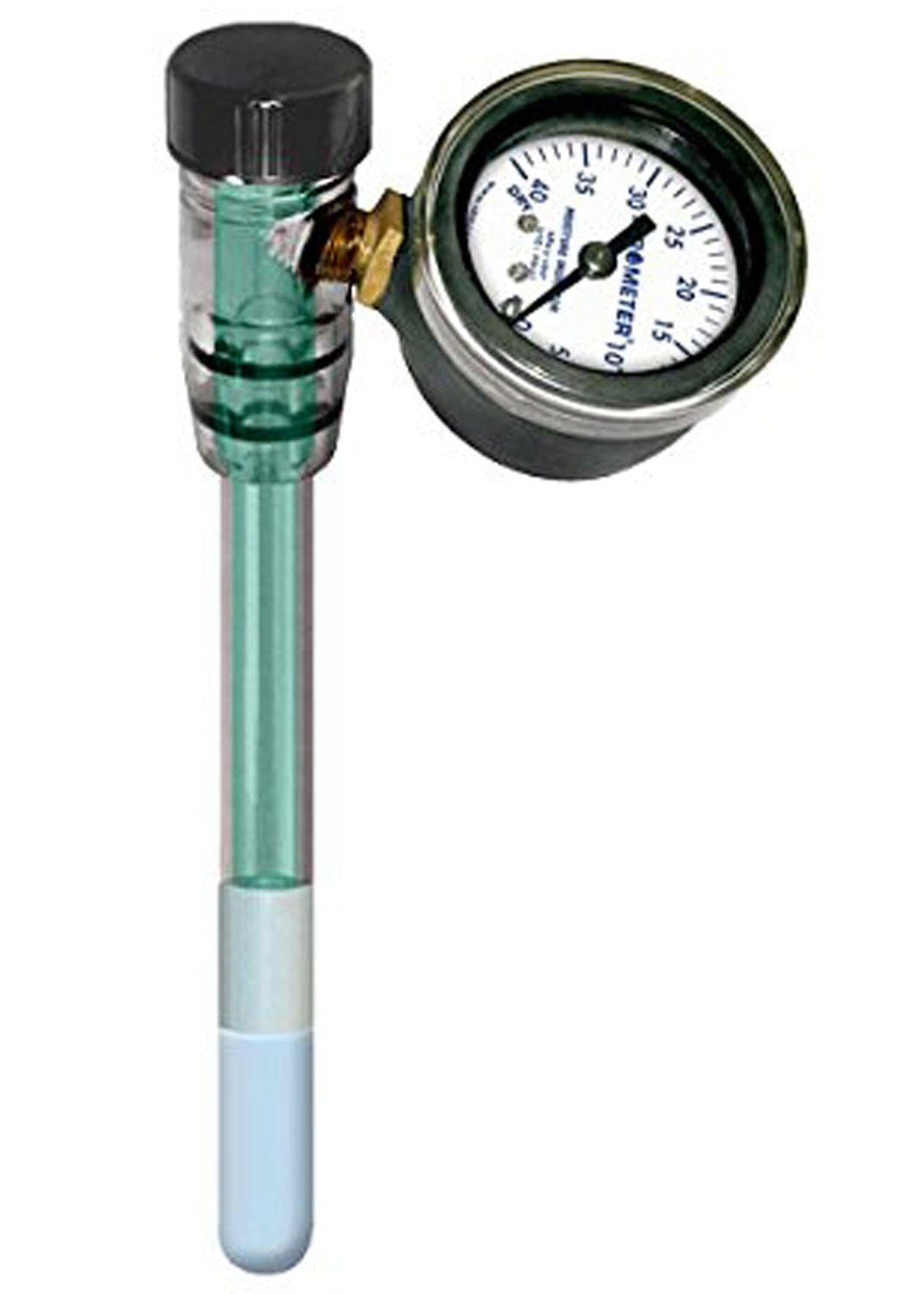Irrometer
IRROMETER | Tensiometer | MLT
IRROMETER | Tensiometer | MLT
Couldn't load pickup availability
Miniature Low Tension Soil Moisture Detector The IRROMETER Model MLT (Miniature Low Tension) was designed for use in small containers commonly used in greenhouses and nurseries. Its compact design and short insertion depth of 4.75 inches (12 cm) allows the MLT to be installed in smaller containers. With a range of 0-40 centibars (cb) or kilopascals (kPa), this instrument is for use in situations where tensions above 30 cb (kPa) are rarely expected. Gauge increments of 1 cb (kPa) provide a benefit where finer resolution near saturation is needed. This model instrument is also well suited for conditions where rapidly changing soil moisture conditions need to be observed. The Quick-Flo ceramic tip is colored blue for easy identification. Includes: Reservoir Vacuum gauge that reads in centibars (cb) and kilopascals (kPa) [0-40 cb (kPa) range] Body / tip assembly.
Features:
- Gauge with a full range of 0-40 cb (kPa) Quick-Flo ceramic tip (blue)
- Body-tip assembly can be easily replaced in the field Compact size is designed for small containers
- Hermetically Sealed Gauge Operating Principle
The IRROMETER operates on the tensiometer principle, which measures soil water tension. Soil water tension is the energy (vacuum) applied to the soil by the plant as it draws in water for nutrition. This force is measured in centibars (cb) or kilopascals (kPa) of tension with a high reading indicating the dry end of the scale and a low reading indicating the wet end of the scale. The IRROMETER instrument consists of a sealed, fluid filled tube that is equipped with a porous ceramic tip and a special vacuum gauge. They are installed in the soil or growing media with the tips placed at desired root zone depths. As the soil dries (increasing tension), fluid is drawn out of the instrument. This reduces the fluid volume in the IRROMETER, thus creating a partial vacuum which is registered on the gauge. The drier the soil, the higher the gauge reading.
We shoot for a reading of roughly 10 when using Irrometer tensiometers in our soil.
Share


